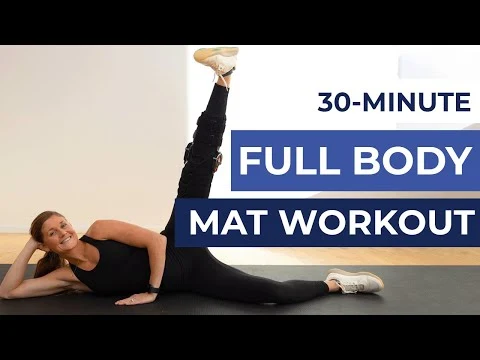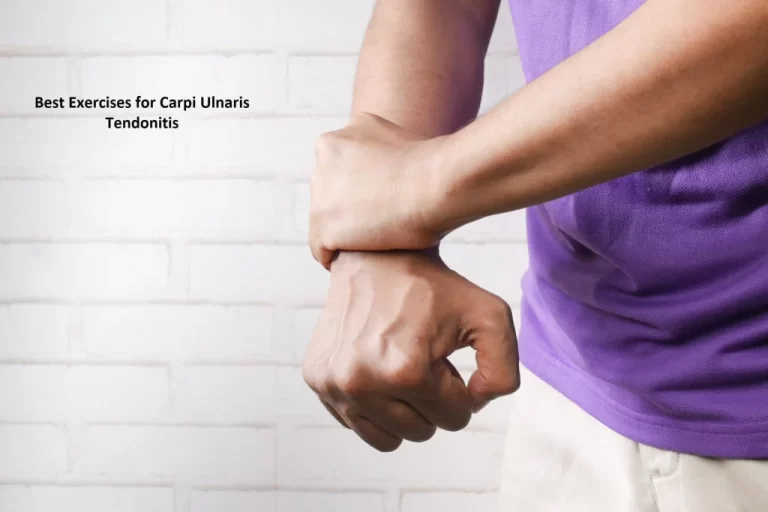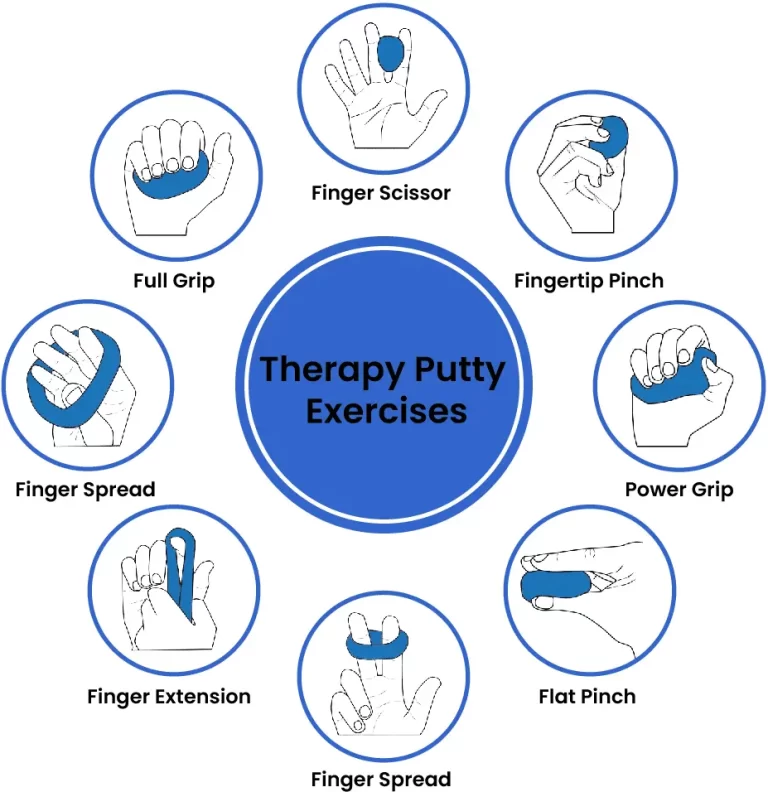Mat Exercises
What Are Mat Exercises?
These can vary based on your objectives or the level of fitness you wish to achieve. For example, exercises done on a yoga mat are not the same as exercises done with weights.
Mat exercises are a good place for beginners to start because they usually don’t demand a lot of strength or flexibility. You can also select the sets and repetitions that work best for you, based on your physical capabilities. In a similar vein, poses and workouts done on a yoga mat can be customized to fit the needs and preferences of each individual.
Mat activities are given to:
- Encourage equilibrium
- Promote stability
- Activate and fortify the limbs and back.
- Prepare for tasks that require function.
To get the intended outcome of the treatment program, mat exercises should be arranged in an easier-to-difficult order, and progression through the sequence should be taken into consideration. Based on the patient’s condition and degree of strength, the therapist selects the type of mat exercises that the patient will perform.
How much of an activity can be completed and how long it takes to learn depends on the patient’s abilities. It is imperative that therapists work hard to improve their patients’ agility and timing.
Benefits of Mat Exercises
There are certain general advantages to utilizing the mat for core exercises, even though the advantages of the various mat routines we mentioned above vary. Among them are:
- Build up your core, gluteal, shoulder, and back muscles.
- Improve stability and flexibility
- alleviate neck and back pain
- Boost your muscles’ strength and burn calories.
- Reduce tension and worry
Here are some examples of various mat exercises for full-body training:
To improve your outcomes, you might select five to seven exercises from this list and execute them for thirty minutes at a time.
Plank
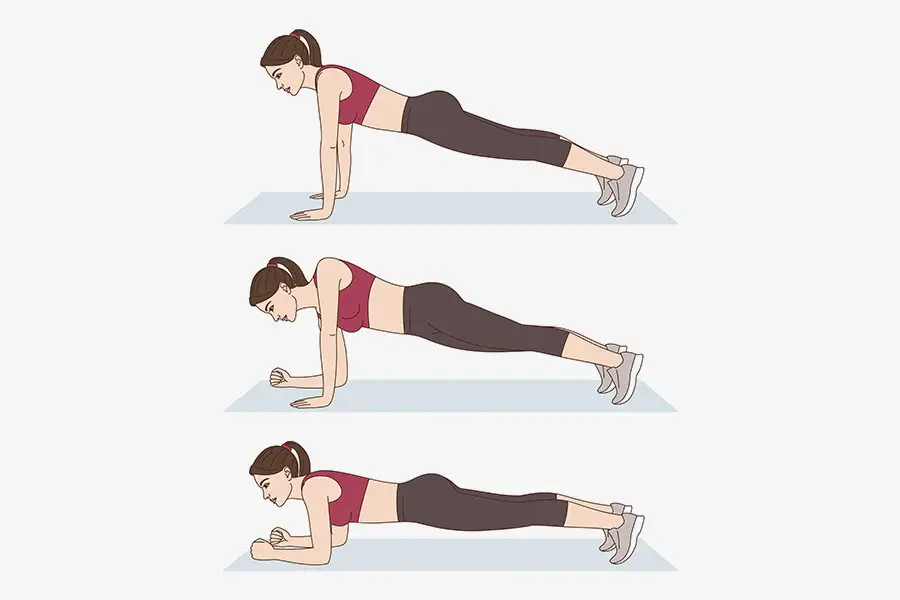
If you keep proper form, planks are an excellent technique for working out your complete body in one workout. An activity mat provides enough cushioning to be comfortable on all four limbs. You might do a plank on your palms or your forearms. A variety of wrist wraps are available to support joints.
- Begin by establishing a plank posture with your forearms and toes on the floor, facing down. Your head is relaxed even though you should be looking at the floor.
- Maintain a firm and upright trunk and a straight body from your ears to your toes without bending or sagging. The spine should be positioned like this. Verify that your shoulders are relaxed and not tucked in toward your ears.
- Hold this stance for ten seconds. Let go to the ground.
Bridges
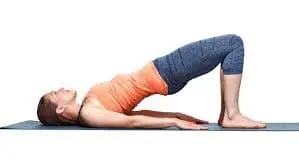
This mat exercise requires you to bend your back into a bridge, as the name would imply. If you’re looking for some abdominal exercises, we suggest trying this one.
- If you have a mat, place it in an open spot on the floor and lie on your back.
- To tighten your abs and buttocks, press your lower back on the floor.
- Your belly button will come closer to your spine if you flex your abdominal muscles.
- Lean your hips back to return to the beginning posture.
Crunches
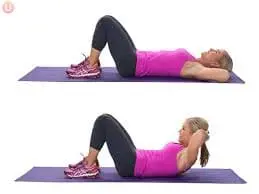
It tones the rectus abdominis, which is the muscle that makes up your abs, as well as the muscles in your back. However, to make it more comfortable, you may also perform it on a yoga or fitness mat.
- Put yourself on your back. Ensure that your feet are hip-width apart. Tense your abdominal muscles as you take a breath.
- With your head and neck comfortably in place, exhale and raise your upper body.
Leg Raises
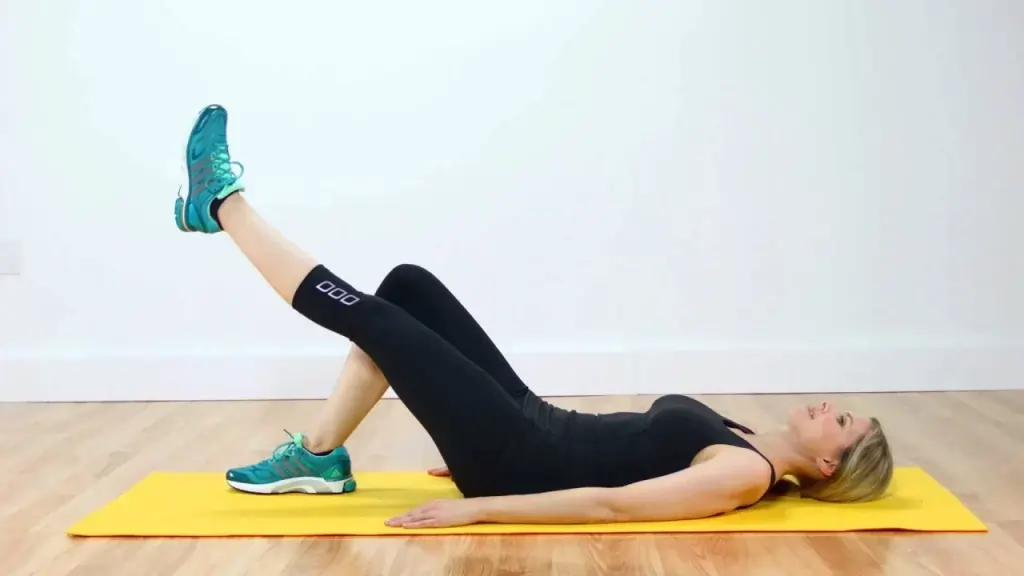
- By strengthening and stabilizing the affected area, leg lifts while lying down can also alleviate lower back discomfort.
- You must lie down in a supine position with your arms by your sides to begin this workout.
- Now spread your legs apart.
- Exhale and lift your legs.
- Hold this position for 5–10 seconds.
- You will breathe in and control your legs as you descend, keeping your lower back in contact with the floor. Keep your feet floating off the ground as you descend from the exercise, and then perform the previous three steps ten times.
Superman
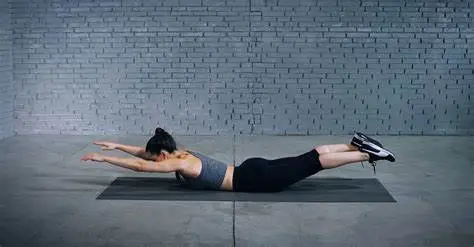
- Face down on the floor, position your arms aloft, palms facing each other, legs straight, toes touching the floor, and pinkies lying on the ground.
- Maintain a neutral neck position and focus on your eyes while using your back, core, and glutes.
- After a two-second pause at the peak, carefully drop your arms and legs to begin again.
Pilates 100s
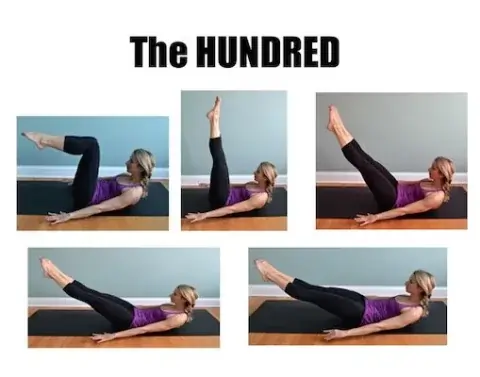
If there are no Pilates mat exercises included in the mat workout, it is not complete. Thus, this is the final move that novices are frequently advised to make.
The exercise gets its name from the fact that you have to do 100 arm muscle beats while extending your legs and lifting your head and shoulders off the mat. You may also use the hundred as a high-intensity warm-up before doing core and lunge exercises.
- Take up a prone posture. Assume the tabletop posture by raising your legs and bending them at the knee while keeping your shins and ankles parallel to the floor.
- Inhale.
- Take a breath and release it. Raise your chin and head to shoulder blade level, then utilize your abdominal muscles to lift your upper back off the ground. Maintain an engaged back and downward-flexed shoulders. Peer down into the scoop of your abs. Hold on while you inhale.
- Take a breath and release it. Draw your abs deeper while simultaneously extending your arms and legs. For more complicated operations, you can raise them higher or lower as needed. Make sure you only lower your legs to the extent that it doesn’t cause you to tremble or cause your lower back to rise off the mat. Arms should be straight and lowered so that your fingertips are only a few inches off the ground and pointed towards the far wall.
- Maintain your position. Inhale five brief breaths, followed by five short exhalations. During this workout, pump your arms up and down a little yet quickly. Keep your neck and shoulders relaxed. The strongest muscles should be found in the abdomen.
- Ten full breath cycles should be performed. Every cycle consists of five quick inhalations and five quick exhalations. The arms pump up and down in a 6- to 8-inch pump in sync with your breathing. Maintain a flat back, a scooped abs, and a head pointed down to stretch your spine. Breathing deeply is important. Breathe deeply into your back and sides. Practice your lateral breathing if you’re not familiar with it.
- Finally, keep your spine curved while raising your knees to your chest. Breathe in deeply, then out.
Seated Russian Twist
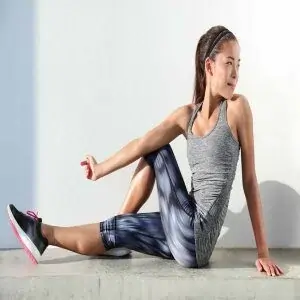
A wonderful approach to improving your shoulder and core muscles is to perform Russian twists while seated. Even though it can be used as a beginner’s yoga mat practice, the workout is not that simple.
- You’ll need a lot of help and strength to accomplish it.
- Next, lean backward such that your upper body is angled 45 degrees in the direction of the floor. Throughout this exercise, it will be easy to hunch your shoulders forward but fight the impulse to keep your back straight. Join your hands in front of your chest while bracing your core. Move your arms singly, then the other way around. That is equivalent to one rep.
Mountain Climber
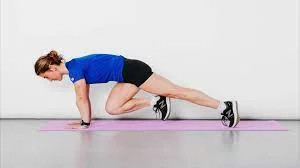
You’ll look like you’re running against the ground. Once you get the hang of this move, you can try mountain climber versions.
- When you initially start, try the classic variation of the exercise:
- Hold a plank position, evenly distributing your weight between your hands and feet. Aim for a flat back, align your head, and place your hands shoulder-width apart.
- As near to your chest as you can, try to bring your right knee.
- Pull one knee out and bring the other in to do a leg switch.
- Keep your hips down and move your knees in and out as quickly as widely as possible. Breathe in and out alternately with each leg shift.
Cat-Cow
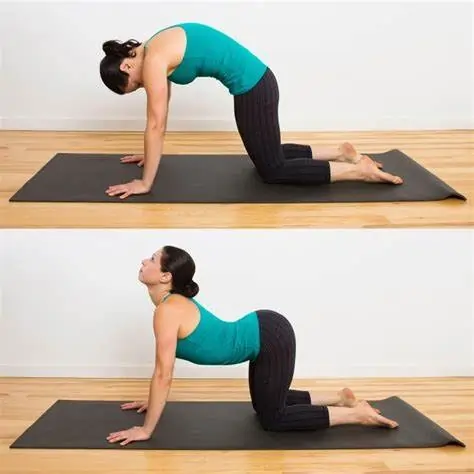
For people who are sedentary at work, this is the ideal workout.
- Begin with both hands and the knees, knees beneath your thighs, hands under your shoulders, or slightly forward.
- Press through the base and fingertips of your fingers as you extend them.
- In a cat stance, exhale, draw in your belly, raise your side waists, turn your back, and lower your head to the floor.
- When you forcefully push the floor away, feel the stretch in your back.
- Exhale and return to your initial neutral stance by taking a step.
- Following multiple repetitions of the Cat-Cow pose, the Cow stance is frequently utilized to warm up the spine.
Downward Dog
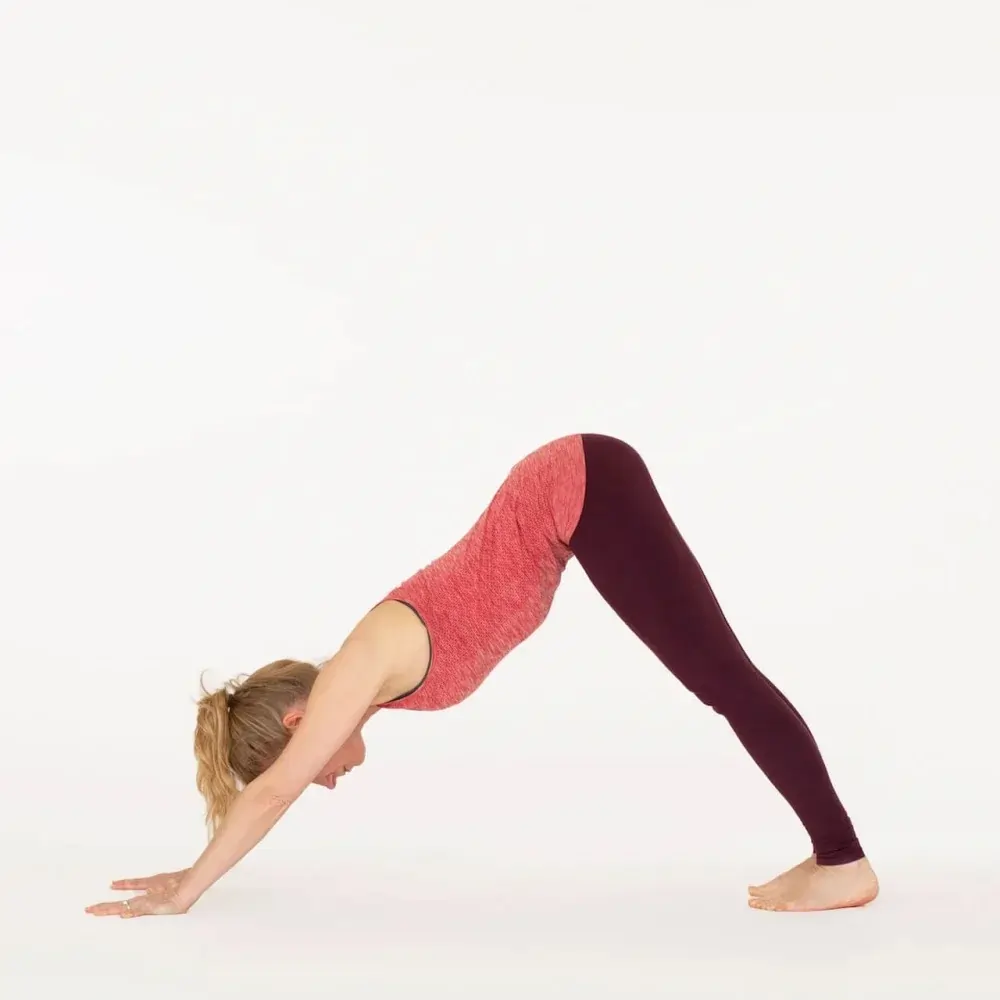
Your entire body is stretched during the activity, improving your flexibility and balance.
- You can practice this pose anywhere there is a yoga mat available.
- Squeeze your fingertips to your forearms after spreading your fingers.
- Rotate your upper arms outward to make your collarbones larger.
- Allow your head to drop loosely as you move your shoulders from your ears to your hips.
- Firmly contract your quads to take the weight off your arms. This movement designates this as a resting stance.
- Turn your thighs inside, keep your tail up, and press your heels down toward the earth.
- Make sure your hands and feet are at the proper distance apart by bringing yourself forward into a plank position. The distance between the hands and the feet in each of these stances should be the same. Refrain from stepping the feet toward the hands in Down Dog to bring the heels to the floor.
Double-Leg Stretch
If you find this exercise too challenging, try working on one leg at a time. An alternative would be to fully extend the legs while bending the knees slightly.
- To lengthen your lower back, bring both knees to your chest while holding onto your ankles.
- Make a middle drawing.
- Breathe out and raise your legs and arms to the sky, staying in the same position as shown.
- Hold the stance for ten long, deep breaths, and then release.
- Do this ten times over.
Single-Leg Circles
Your core strength and pelvic stability are tested with the single-leg circle. In addition, it strengthens the quadriceps and hamstrings and promotes a healthy hip joint. If you can’t raise the leg straight up towards the roof, just stretch it as far as you can.
- Raise and extend your right leg.
- Extend your left leg from beneath you.
- If possible, grip the toes with both hands. Should you be unable to maintain your balance on your toes, grasp onto your thigh or calf, and raise your heel to the ceiling?
- Hold this position for ten counts.
- Spread your arms and hands to your sides after releasing your grip.
- With your leg outstretched, make ten little circles in each direction.
- Proceed to the other side.
Hip-Opening Exercise
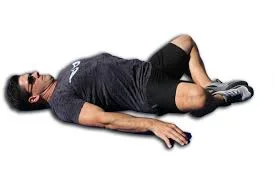
- The frog is a hip-opening exercise that you can do while seated or reclined. Either way, hip openers help your hips and spine stay flexible and in balance.
- As far apart as seems comfortable, extend your knees.
- As you rest, take slow breaths and keep your knees apart.
Split Squats

- Spread your legs wide apart and take a big stride forward.
- Now lower yourself to the floor with equal weight on both legs.
- A 90-degree angle is formed between your thigh and calf when your front leg is at its lowest point.
- Next, place your rear leg in front of you to reverse the leg positions.
Burpees
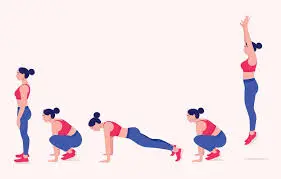
- Strike a push-up position.
- To complete a push-up, instead of lowering your body to the ground, spring forward with your feet until your knees nearly touch your elbows.
- Then lift your arms off the floor and lower yourself into a squat.
- Push yourself up from the squatting position using the strength of your leg muscles to jump up.
- Your legs should be perfectly straight and your tiptoes just above the ground when you are at your tallest position.
- Then, repeat the entire operation backward until you reach your starting point.
- You can make this exercise more intense by holding your push-up or squat position for a little while longer.
Push-ups
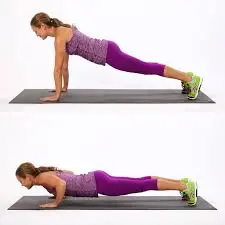
- Every one of the four limbs ought to be grounded.
- Place your hands on the ground.
- Now extend your legs backward, being sure to tense every muscle in your body.
- Place your arms at chest height, about shoulder-width apart.
- Flex your arms and drop yourself until your nose nearly touches the floor from this posture.
- When finishing the exercise, make sure to tuck your elbows securely into your chest.
Side-Plank Crunch
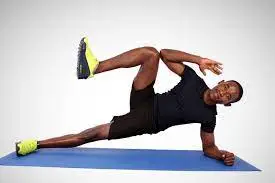
- Begin in the side elbow plank position by placing your right hand behind your head and your left elbow bent.
- Raise your waist and raise your right leg to your shoulder to lightly tap your right elbow while keeping your trunk firm.
- To finish a repeat, extend your right leg back to its starting position.
- After thirty seconds, switch sides for a further thirty seconds and finish as many repetitions as you can.
Seated Knee Tuck
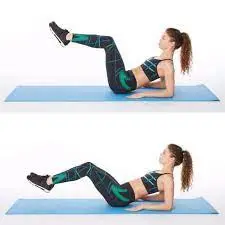
- Take a seat on the floor or a weight bench to start this exercise. Place your hands about an inch behind your back with your fingers pointing forward.
- Elevate both feet off the ground and lengthen both legs while lowering your upper body at the same time. Make sure your legs and hips are completely extended.
- Return to the starting position by carefully bringing your legs back to your chest without letting your feet touch the ground.
Plank With Lateral Arm Reach
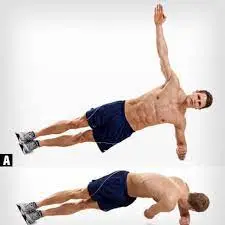
- starts this workout by lying on a plank.
- Reach your left arm out to your side gradually while keeping your trunk stable. Hold this stance for ten seconds. Try shifting your right hand from under your right shoulder to under the middle of your chest if you feel unstable.
- Return your arm to the plank position while keeping your trunk steady. Don’t round your back or bend your spine.
- Repeat with the second arm after bringing the right to your side. There is only one repetition in this case.
Plank With Alternating Arm and Leg Raise
- Maintaining a straight posture with your arms and legs, place your shoulders over your wrists to assume a plank position.
- While keeping control, raise both your left leg and your right arm off the ground simultaneously.
- Avoid rotating your upper body and hips. Hold on a little while longer.
- To restore control and go back to the beginning position, lower your right arm and left leg.
Bird-Dog
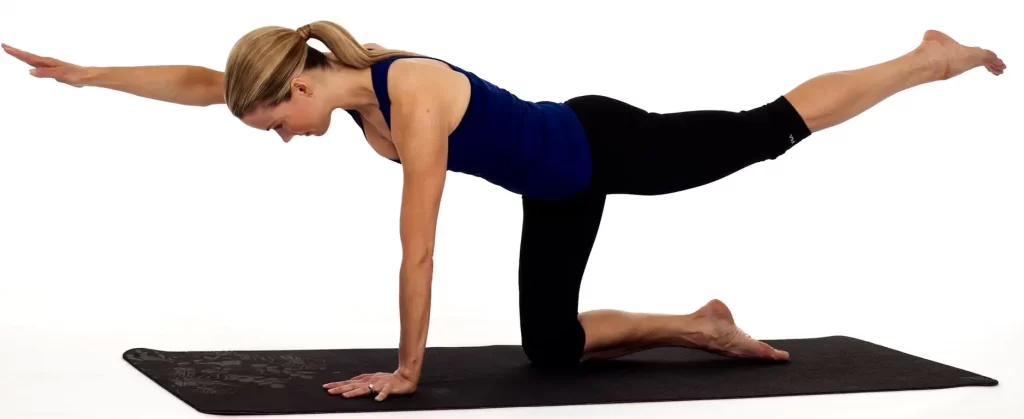
- Maintain a straight back.
- Before extending your right hand, extend your left leg.
- Bring your left leg under your chest and your right elbow together by bending your head and back. One iteration is finished with this.
Diamond Sit-Up
- In a supine posture, spread your knees wide and press the soles of your feet together to form a diamond-shaped set of legs, often known as butterfly legs. Straighten your arms above your head.
- Inhale deeply to raise your trunk, and slightly extend your glutes by tapping the floor in front of your feet.
- Return to the starting position gradually.
- It has only occurred this once.
Reverse Crunch
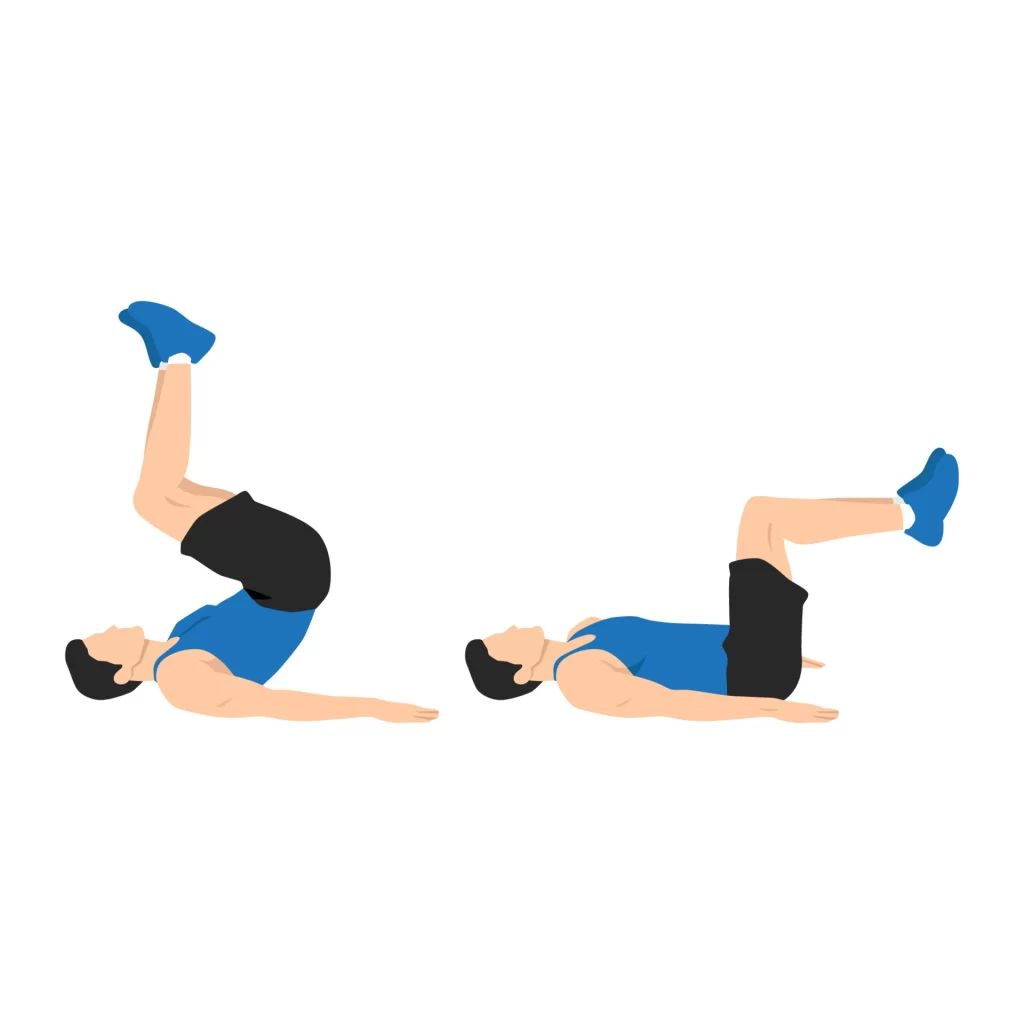
- While in a supine position, extend your legs and bend your knees. Keep your hands by your sides.
- Utilizing your lower abdominals, slowly raise your hips off the floor and into your chest without using any force.
- One rep is awarded for this.
T-Cross Sit-Up

- Start by lying on the floor and spreading your arms broadly to the sides of your body to create a T.
- Get comfortable. Rotate such that your left hand is close to your right toe after raising your right leg. Roll slowly back down and then reverse the motion.
- One iteration is finished with this.
Straight-Leg Sit-Up
- Lay flat on your back, arms stretched to the ceiling and legs spread wide.
- When you roll up into a sitting position, pay attention to your abdominals. Carefully roll one vertebra at a time to the mat.
- This completes one rep.
Runner’s Crunch
- As you roll up to a nearly sitting posture, keep your core tight and bring your right knee up to meet your left elbow.
- It should feel almost like you’re jogging.
- Let your knee stretch comfortably, then progressively sag your back vertebra by vertebra until your shoulders are the last to make contact with the mat.
- For one rep, switch up your leg movements.
V Crunch
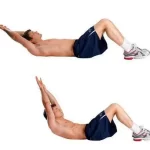
- While on your back, raise your arms and legs to the lofty position. Stretch your hands toward your feet and lift your upper back off the floor.
- Raise your arms and bow your knees to the ground as you
- maintain your lower back pressed into the mat and your shoulders off of it.
- Perform the crunch movement one more.
Double Crunch
- KeeLay flat on your lower back on the floor, maintaining a 90-degree angle between two limbs.
- Tense your abdominal muscles to raise your shoulders and pelvis off the ground. Feel your toes with your fingers.
- Keep your core active the entire time as you gradually lower them back to the beginning position to complete one rep.
Scissor Abs

- Lie down in a supine position. Stretch your arms out to the sides of your body, pressing your palms into the earth, or bend your elbows and place your hands behind your head. Draw your knees into your ribcage by flexing them. It will be simpler to actively press your lower back flat on the floor and pull your navel in toward your spine as a result.
- Raise both legs straight up toward the ceiling while maintaining firm abs and a flat lower back on the floor. Maintain a firm core as you gradually lower your right leg toward the floor until it is only a few inches above the ground. Next, progressively scissor your legs so that your left leg descends toward the floor and your right leg rises back up. One iteration is finished with this.
Oblique V-Crunch
- With your right hand on the floor and your left hand behind your head, lie on your right side.
- Lift your straight legs off the ground and press down into your right hand while bringing your body towards your legs.
- Go back to where you were before. This completes one rep.
Tabletop to Reverse Pike
- When you first sit on your bum, place your hands eight inches behind your head. Place your heels about a foot away from your hips and bend your knees. Make sure there is a hip-width gap between them.
- Breathe deeply, then raise your hips off the floor until your torso is parallel to the ground and your arms are straight. Make any little adjustments required to guarantee that your ankles are beneath your knees and your hands are positioned directly beneath your shoulders. To improve the stretch in your neck and chest, lower your head behind you. Breathe out, letting go of tension in your hips, and extend your legs until your hips are hovering above the ground. Keep a straight arm motion while holding your breath. Try to keep your spine long and contract your abdominals while you balance on your hands and heels. Inhale deeply, then exhale again as you thrust yourself back into the beginning position.
Modified Windshield Wipers
- Lying on your back, position your arms at a 90-degree angle with your palms facing away from your shoulders to help support your spine and shoulders.
- Lift your legs off the ground and bend your knees to a 90-degree angle so that they resemble a chair.
- Step your feet softly and deliberately to one side. Connect your navel to your lower back. Your spine will raise slightly off the ground as you turn but try to keep it as close to the ground as you can.
- Bring your legs back to the beginning position by contracting your abdomen.
- Lower to the other side, then do it again. This completes one rep.
Windshield Wiper Abs
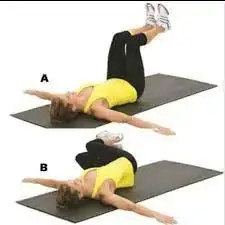
- Lay on your back with your arms 90 degrees out from your shoulders, palms facing down, and firmly pressed into the ground to help stabilize your shoulders and spine.
- Straight legs and relaxed feet are ideal. Try to keep your hips at a 90-degree angle throughout the workout.
- Carefully and gently, lower both of your legs and feet to one side. To reach your spinal column, grab your navel. Your spine will lift slightly off the ground when you turn but try to keep it pushed into the ground as much as possible.
- Repeat after lowering yourself to the other side. There is only one rep left in this.
Boat Pose
- Place yourself on your mat. You can balance on your buttocks by lifting your feet off the ground and bending your knees. Maintain a straight spine and legs as much as possible to avoid curving the back. If this is too hard, you can still activate your core by keeping your knees bent.
- Hold on for 30 seconds.
Hollow Body Hold
- Place your legs straight and your arms high, starting from the rear.
- Your belly button should be brought into your spine as you firmly push your lower back onto the floor.
- Breathe deeply, then slowly raise your shoulders, arms, and legs off the ground. Hold your hands and heels as low as you can while keeping your lower back pressed into the floor. Maintain firm abs and glutes. It’s acceptable to bend your knees if maintaining straight legs is too much for you. This is the position you have to stay in for thirty seconds.
Dead Bug
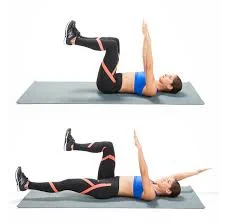
- With your hips and knees at right angles and your spine in a neutral position, lie on your back and press your palms into your thighs just above your knees.
- Keeping your pelvis and rib cage in place, stretch your right arm and leg until they are almost parallel to the floor, drawing your abs in towards your spine. Keep your body and spine perfectly stable while your arm and leg move.
- To finish one rep, go back to the beginning position and repeat on the left side.
Extended Dead Bug
- Assume a hollow body hold position and raise your arms and legs to the ceiling.
- Press your lower back onto the floor with your abs while pulling your navel to your spine.
- Lower your left leg and right arm as far down as you can without letting your back arch off the ground. Extend your arm backward and stretch your leg out the other way.
Twisting Side Plank
- Stack your feet one on top of the other and place your weight on your right elbow to form a side plank position on your right side. Spread your fingers apart from your body, palm down.
- To ready, breathe deeply and place your left arm behind your head.
- Exhale and bring your navel to your spine to engage your deep abdominal muscles and rotate your left rib cage towards the floor. To strengthen your abdominal connection, stay there for a moment and then pull your navel in even closer to your spine.
- Switch sides after completing eight total repetitions, or seven more times beginning at the beginning.
Figure Four Bridge
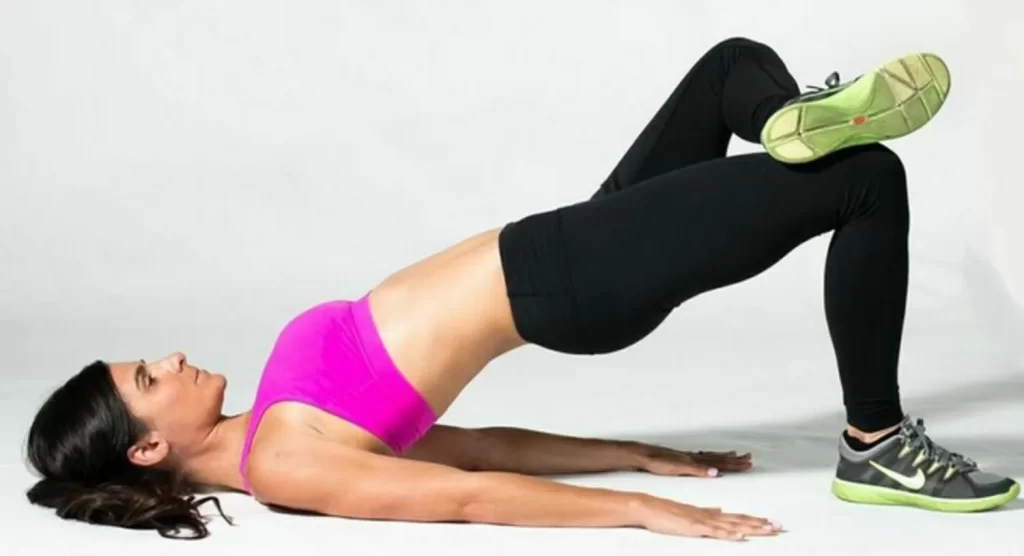
- Assume a supine position, bending at the knees and placing your feet level on the floor with your heels only inches from your buttocks. Cross your right ankle over your left knee and stretch your arms in a low “V” next to your torso, palms up. Raising your hips a few inches off the surface requires you to push through your left heel. After a little pause, return your hips to the mat with caution.
Precaution
Here are some fundamental safety measures to follow when performing the yoga mat exercises:
- Make sure your posture is correct.
- Take your time with the exercises.
- Avoid mat workouts like downward dog and planks if you are pregnant.
- Before starting a mat workout, see a doctor if you have shoulder or back problems.
- Consume no food before or following any of these workouts.
FAQ
What kind of exercises are mat exercises?
Mat exercises, especially for wheelchair users, are a fantastic place to start when it comes to strengthening the core and improving posture. It also provides an opportunity to practice fundamental postures and gait patterns that will help with daily tasks such as getting into and out of bed.
What advantages do mat activities offer?
builds up the core muscles.
improves elasticity and equilibrium.
Enhances alignment.
Increases Total Power and Stamina.
Promotes Weight Loss.
Reduction of Stress.
Enhanced Cognitive Performance.
Are mat workouts effective?
When you do the basic Pilates movements mindfully, you’ll find that you become more formed, flexible, and powerful. for learning the proper muscle activation techniques as well as strength training.
What materials are used to make exercise mats?
Material: Exercise mats can be made from PVC, rubber, foam, or even fabric. Rubber mats may be less soft than PVC mats, but they are more likely to stay in place. Though both are wonderful, the choice ultimately comes down to how you want to utilize this mat.
References:
Tirgar, P. (2023c, December 31). Top Mat Exercises for a Full-Body Workout. Mobile Physiotherapy Clinic. https://mobilephysiotherapyclinic.in/top-mat-exercises/
Dip, P. (2023, July 31). Training with The Exercise Mat – All Benefits and The 10 Best Exercises. Pullup & Dip. https://www.pullup-dip.com/blogs/training-camp/exercise-mat-exercises
Findley, D. (2024, February 4). Mat Exercise Program for Strength and Flexibility – 17 Movements. Over Fifty and Fit. https://overfiftyandfit.com/mat-exercise-program/
Ryan, M. (2020, April 28). 32 No-Equipment Ab Exercises You Can Do on a Mat. Popsugar. https://www.popsugar.com/fitness/ab-exercises-you-can-do-on-a-mat-47181352

